 |
 |
 |
| |
Adherence With Combination Antiretroviral Therapy (cART): Do Challenges Still Persist? "31% non-adherent"
|
| |
| |
Reported by Jules Levin
Durban IAC 2016 July 18-22
Rebecca Hahn, MPH,1 Bridgett Goodwin, PhD,2 Susan L. Hogue, PharmD, MPH,3 Miranda Murray, PhD,4 Kimberly H. Davis, MS3
1Nielsen, Rochester, NY, USA; 2GlaxoSmithKline, Research Triangle Park, NC, USA; 3RTI Health Solutions, Research Triangle Park, NC, USA; 4ViiV Healthcare, Brentford, England
- Approximately 68.8% of participants were adherent with their HIV medications and 31.2% were non-adherent
- Approximately 22% of PCPs and 29.6% of ID specialists reported that almost all or all of their treatment-naive patients were fully adherent to their HIV medications
-Forgetting to take medication and availability of pills were the most commonly cited reasons for non-adherence by both groups [patients and doctors]
- Those taking more than 1 pill to treat their HIV were significantly more likely to be non-adherent than those taking 1 pill (41.0% vs 12.2%)
The patient sample consisted of 400 patients and was predominantly male (79.3%) with an average (standard deviation, SD) age of 41.1 (13.2) years.
Sixty-one percent of participants reported that they were homosexual, while 28.1% reported that they were heterosexual, and 11.1% reported that that they were bisexual
The majority of participants had a high level of education, with 69.5% of participants reporting that they had completed "some college or less"
58.9% of participants reported coexisting comorbidities, the most common of which were depression (27.5%), high blood pressure (23.6%), and high cholesterol or hyperlipidemia (20.2%)
One hundred and forty-four(36%) participants reported taking 1 pill daily to treat their HIV and 256 participants reported taking ≥2 pills daily (range, 1-23 pills)
A total of 69.2% of participants scored >50 on the WHO-5, which suggests "good well-being." Approximately 20% scored between 29 and 50, which indicates "reduced well-being," and 10.4% scored <29, which may suggest depression


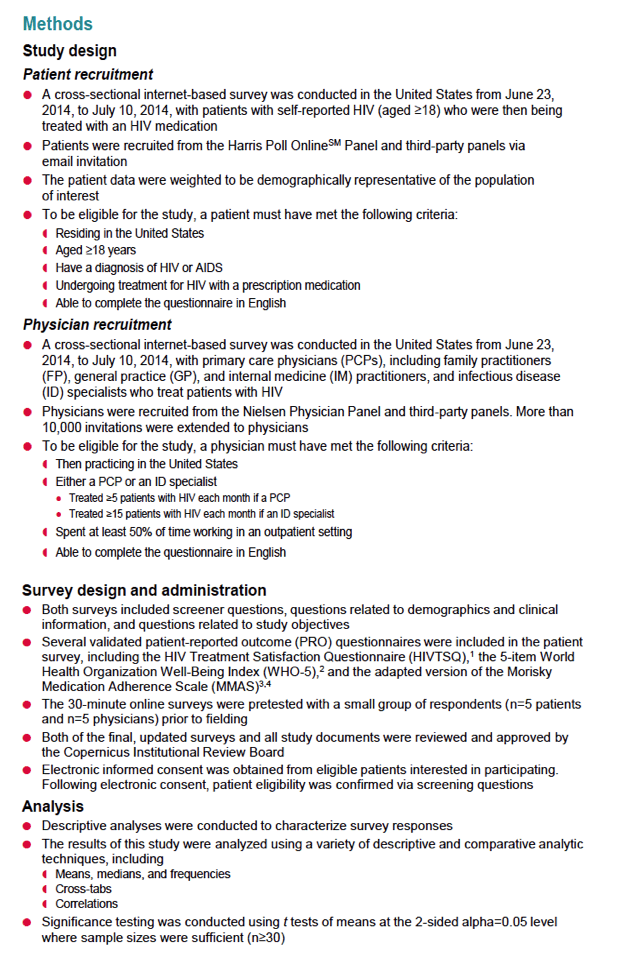
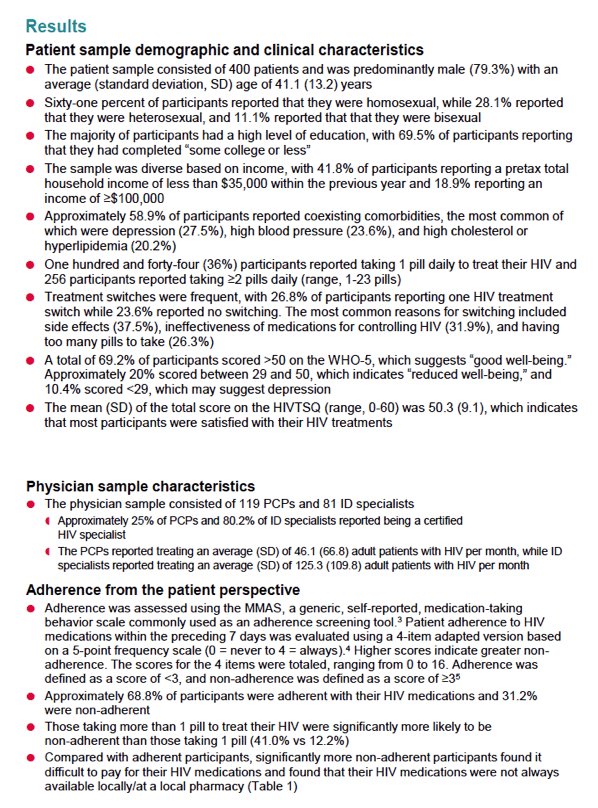
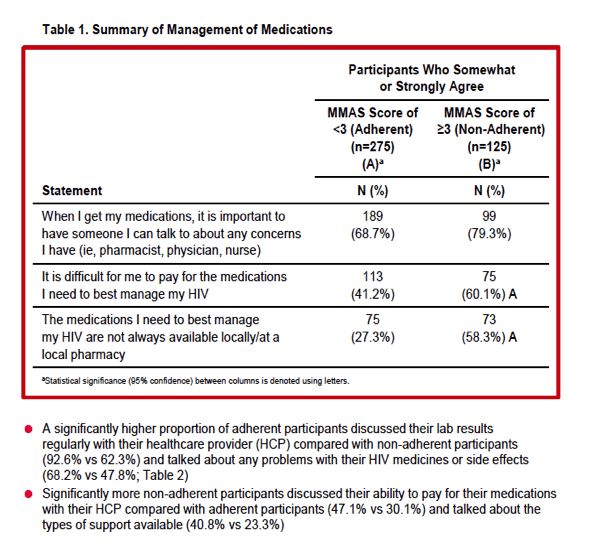
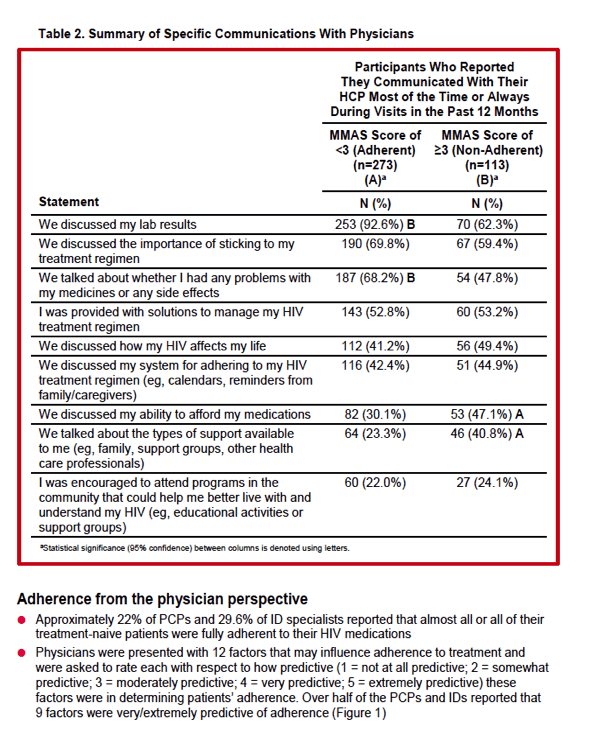
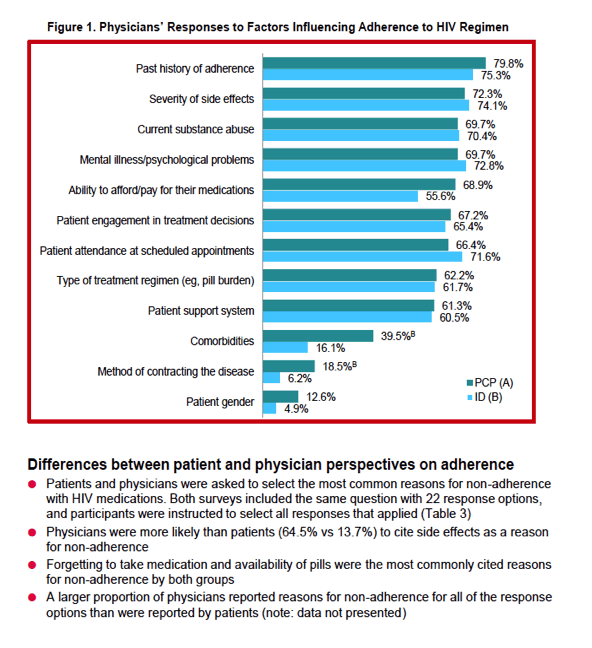
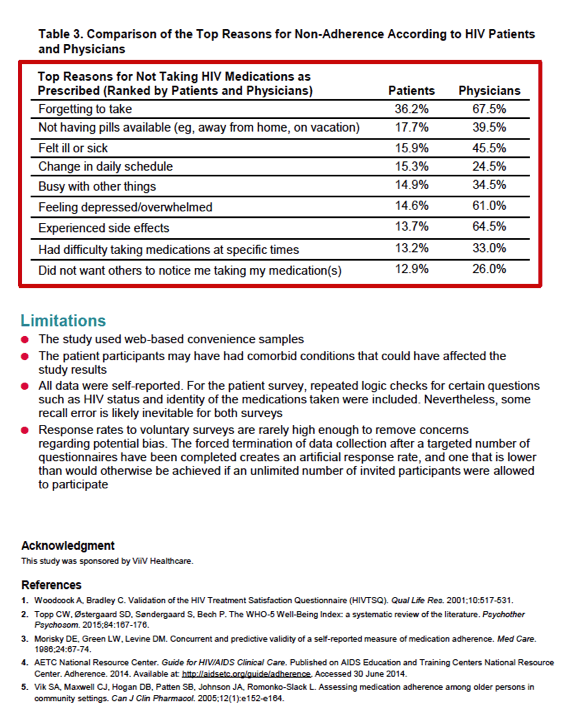
|
| |
|
 |
 |
|
|